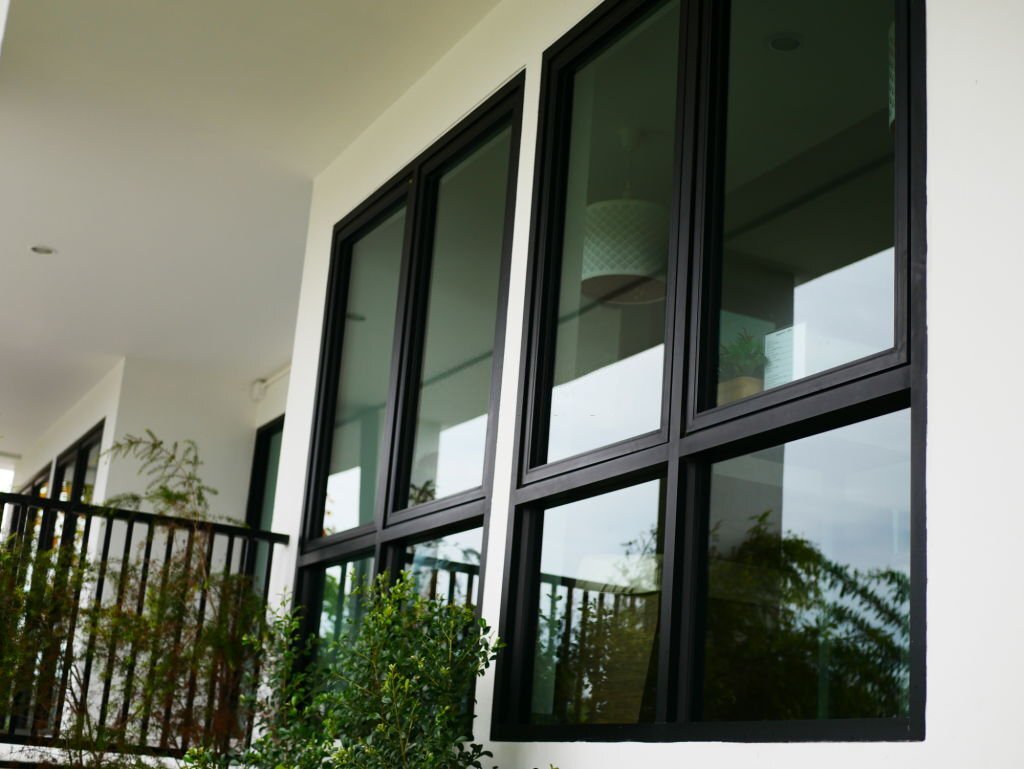Residential Window Tint: Boost Personal Privacy and Design in your house
Residential Window Tint: Boost Personal Privacy and Design in your house
Blog Article
How Residential Home Window Tinting Enhances Your Home's Energy Effectiveness
Residential home window tinting offers a compelling remedy for property owners looking for to boost energy effectiveness within their living areas. By applying specialized movies to windows, it properly reduces heat transfer, thus supporting interior temperature levels and reducing the requirement for extreme home heating or air conditioning.
Recognizing Home Window Tinting
Understanding window tinting is vital for house owners looking for to boost both convenience and power efficiency in their living spaces. Residential Window Tint. Window tinting includes the application of a slim movie to the inside or outside surface area of glass home windows. This movie can dramatically regulate the quantity of sunshine and warmth that gets in a home, hence affecting interior environment conditions
There are various kinds of window tinting films readily available, each with unique residential properties. The efficiency of home window tinting is commonly determined by its Visible Light Transmission (VLT) percentage, which suggests just how much light can pass through the movie.
Benefits of Power Effectiveness
Window tinting not just enhances visual appeals yet likewise plays a significant function in improving power efficiency within property spaces. By lowering heat transfer via windows, colored movies produce an extra steady interior climate, which can cause significant decreases in power usage for cooling and heating. This power performance translates right into reduced utility expenses, giving property owners with significant lasting cost savings.

Additionally, home window tinting boosts the comfort of living rooms. By reducing glow and obstructing dangerous UV rays, colored windows develop an even more enjoyable setting, which can cause enhanced well-being for owners. The security against UV rays also aids protect furnishings and floor covering from fading, contributing to the long life of home items.
Exactly How Tinting Functions
Tinting films run with a combination of sophisticated materials and modern technologies developed to regulate the amount of solar power going into a home. Primarily made up of polyester, these movies commonly incorporate metal or ceramic bits that absorb and show warmth. This double capacity allows them to dramatically minimize the infiltration of ultraviolet (UV) rays and infrared radiation while permitting noticeable light to pass through.
The efficiency of home window tinting is determined by its solar warmth gain coefficient (SHGC), which indicates just how much solar energy is transferred via the window. Lower SHGC worths are more suitable as they represent greater warmth rejection. Furthermore, home window tints can feature a selection of tones, enabling home owners to customize their aesthetic choices while enhancing energy effectiveness.
In addition, these movies act as a barrier, stopping warmth loss during chillier months by mirroring interior heat back right into the home. This thermal insulation effect matches the air conditioning advantages obtained during warmer months, adding to a balanced indoor climate year-round. By handling solar energy successfully, household home window tinting not just enhances comfort but also plays a vital role in decreasing energy consumption and lowering utility bills.
Choosing the Right Tint

There are different kinds of home window films available, including colored, metalized, and ceramic. Ceramic movies give excellent warm control without jeopardizing presence and are very durable, making them a popular option.
Visible light transmission (VLT) is one more critical factor, as it indicates the amount of natural light that can travel through the tinted glass. House owners need to select a tint with a VLT that complements their lighting preferences while still providing sufficient glare reduction.
Furthermore, evaluating the solar warm gain coefficient (SHGC) can assist figure out exactly how well a tint can block heat from sunlight. A lower SHGC indicates far better warmth control, inevitably boosting power efficiency.
Installment and Upkeep Tips
Appropriate installation and upkeep are crucial elements in optimizing the benefits of residential home window tinting. To accomplish optimal outcomes, it is a good idea to employ a qualified specialist for setup. This ensures that the color is used properly, avoiding air bubbles, creases, or misalignment that can jeopardize performance. Experts also make use of specialized tools and strategies, which can improve the resilience and performance of the tint.
Adhering to installation, maintenance is vital to extend the life of the home window movie. It is recommended to wait at the very least one month prior to cleaning the tinted home windows to permit the adhesive to treat totally. When cleansing, use a soft towel and a gentle, ammonia-free cleaner to prevent damaging the movie. Avoid abrasive materials that could scrape the surface area.
Addressing these concerns without delay can protect against more damages and preserve energy performance. By sticking to these setup and maintenance tips, homeowners can guarantee their home window tinting continues to provide substantial power cost savings and comfort for years to come.
Conclusion
In verdict, domestic home window tinting serves as a reliable service for boosting energy effectiveness within homes. By reducing warm transfer that site and obstructing dangerous UV rays, window films add to lower energy intake and improved indoor comfort.
Window tinting involves the application of a thin movie to the inside or exterior surface of glass home windows. By reducing heat transfer with home windows, tinted films produce an extra secure indoor climate, which can lead to considerable decreases in energy consumption for heating and air conditioning.The performance of window tinting is measured by its solar warm gain see page coefficient (SHGC), which suggests just how much solar power is transmitted through the window. By taking care of solar power effectively, domestic window tinting not only improves convenience yet additionally plays an essential role in decreasing energy usage and reducing utility expenses.
By minimizing warmth transfer and obstructing harmful UV rays, window films contribute to lower energy usage and enhanced interior convenience.
Report this page